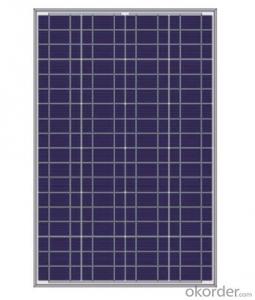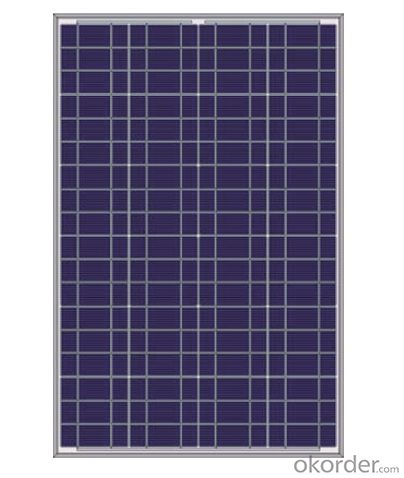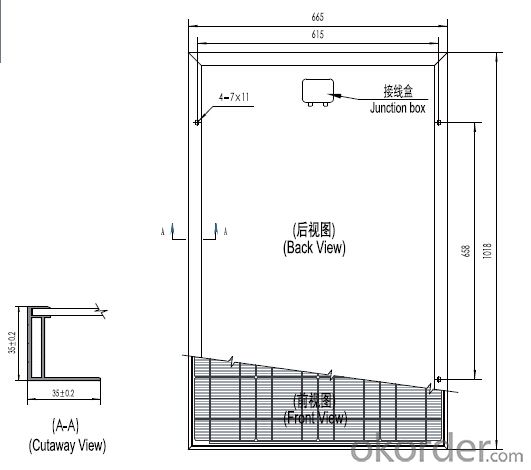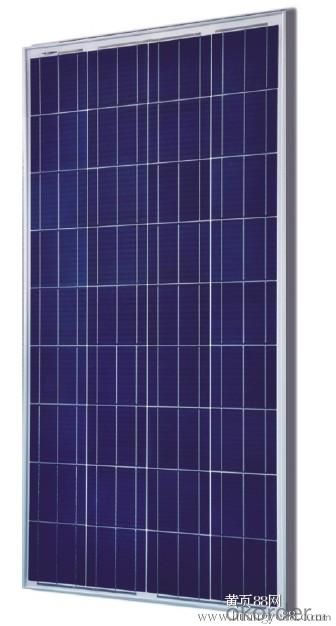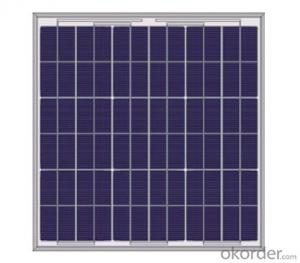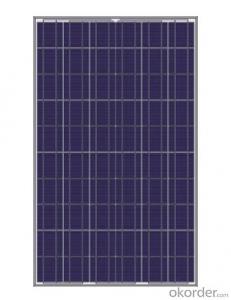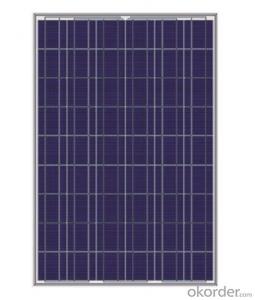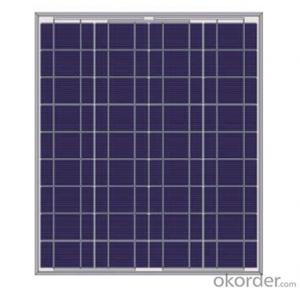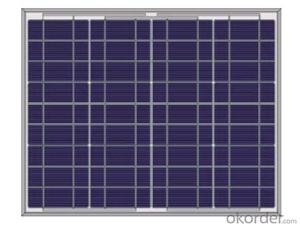Florida Solar Panels - Polycrystalline Silicon Solar Panel Model CR095P-CR080P
- Loading Port:
- Tianjin
- Payment Terms:
- TT OR LC
- Min Order Qty:
- 5 pc
- Supply Capability:
- 100 pc/month
OKorder Service Pledge
OKorder Financial Service
You Might Also Like
1. Structure of Polycrystalline Silicon Solar Panel Model CR095P-CR080P
Solar modules, which are widely used in ground mounted utility-scale PV plants, large-scale and small civil and commercial power generating system such as BIPV combined to the grid, roof-mounted PV power system, rural electrification, communications, emergency auxiliary power. Solar PV module is comprised of some solar cells which are connected in serial with high efficiency and enhanced reliability. The solar cells are laminated between sheets of ethylene vinyl acetate (EVA) and high-clarity low-iron tempered glass, and sealed by the silica gel in a anodized aluminum frame . The solar module has got the professional certificate as following:

2. Main Features of Polycrystalline Silicon Solar Panel Model CR095P-CR080P
· Esthetic appearance, with stands high wind-pressure and snow load, and easy installation
· Water resistant junction box
· Design to meet unique demand of customer
· 25 year poweroutput warranty
3.Polycrystalline Silicon Solar Panel Model CR095P-CR080P Images
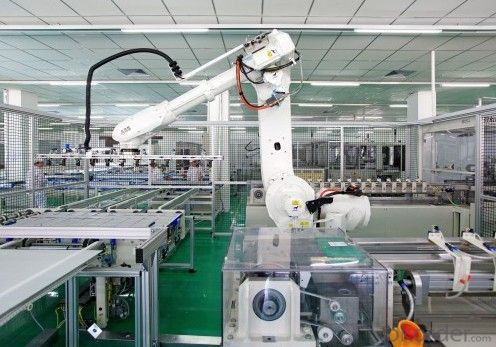
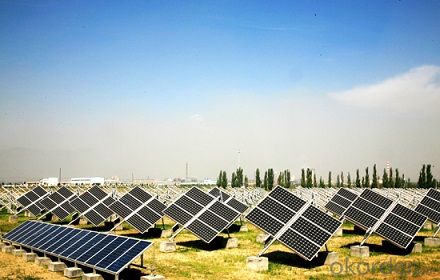
4. Polycrystalline Silicon Solar Panel Model CR095P-CR080P Specification
Module type | CR095P | CR090P | CR085P | CR080P |
Cell type | 156mm × 156mm | |||
No. of cells and connections | 24( 4×6 ) | |||
Dimension of module (mm) | 1018×665×35 | |||
Weight of module (kg) | 7.8 | |||
Maximum Power (Pm) | 95W | 90W | 85W | 80W |
Open-circuit voltage (Voc) | 22.0V | 21.8V | 21.6V | 21.4V |
Short-circuit current (Isc) | 5.77A | 5.60A | 5.50A | 5.48A |
Volatage at Pmax (Vmp) | 18.0V | 17.8V | 17.4V | 17.0V |
Current at Pmax (Imp) | 5.28A | 5.06A | 4.90A | 4.72A |
Maximum system voltage | 715VDC | |||
Operating temperature | -40℃ to +85℃ | |||
5. FAQ
(1) Can you offer the test report of the module?
Sure. All the solar modules must pass necessary tests including EL test and ultra-red test and other visual test of the apperance, and the test report presents all the detailed data of the modules.
(2) How to confirm about the quantity and the type of solar module?
It depends on the solar system where you want to put into use the solar modules. We have experienced engineers to design for your order and you need to give more information to fix the details.
(3) How long will you deliver the solar modules?
We need to purchase the materials according to the list confirmed by you and put into production, and we will do our best to get your satisfaction.
- Q: Can solar panels be installed in a remote location?
- Yes, solar panels can be installed in remote locations. In fact, remote areas with limited access to electricity grids can greatly benefit from solar panel installations. Solar panels are designed to operate independently and generate electricity from sunlight, making them an ideal solution for off-grid locations. They can be installed in remote areas such as deserts, mountains, or even on boats, providing a reliable and sustainable source of power.
- Q: What are the financial benefits of installing solar panels?
- Installing solar panels can provide several financial benefits. Firstly, solar panels allow homeowners to generate their own electricity, reducing their reliance on the grid and potentially lowering their monthly utility bills. Additionally, excess energy produced by solar panels can be sold back to the grid, resulting in potential income through net metering or feed-in tariffs. Moreover, investing in solar panels can increase the value of a property, making it more attractive to potential buyers and potentially leading to higher resale prices. Finally, solar panels can also qualify for various tax incentives, grants, or rebates, further reducing the initial installation costs and providing additional financial savings.
- Q: A local air conditioning company is advertising combining their (newly installed) central air conditioning system for homes, with roof solar panels. They say that the combination MAY reduce your electric bill. Nothing I can see to back-up their claims. Hmmmmm. And they offer, if you can get it; central air conditioning that runs on natural gas. Again, possibly cheaper than using electricity.Has any one actually tested to find out if solar panels and/or natural gas DOES, or DOES NOT save you any money to make it worth the bother?
- Solar okorder /
- Q: Can solar panels be used in commercial buildings or industrial settings?
- Yes, solar panels can definitely be used in commercial buildings or industrial settings. In fact, they are increasingly being installed in such settings because of their numerous benefits. Solar panels not only help businesses reduce their carbon footprint and contribute to sustainability goals, but they also provide long-term cost savings by generating renewable energy and reducing electricity bills. Many commercial and industrial buildings have large rooftops or open spaces that are ideal for solar panel installations, allowing them to harness the sun's energy efficiently. Additionally, businesses can take advantage of various incentives and government programs that promote the adoption of solar energy, making it a viable and attractive option for commercial and industrial sectors.
- Q: Which kit did you use?How easy was it to build? How much did it cost to build the panels?How many kw or watts does it produce?Any other info on the kit or panels you built would be helpful.Thanks!
- the kit is a fraud and should be ignored. You cannot make a solar panel at home to the quality and output that professional ones are. It's like thinking you can buy chips and make your own PC.
- Q: I really want a projector but i hear they use a lot of energy because of the lamp. I want a good one to watch movies and play games on. but i don't want one that is gonna kill the lighting bill.is there like a solar panel or something i could use for it. PLZ HELP.
- Do understand, that a solar panel is slow to pay for itself. Let's say your electric bill was $200 a month ($2400 a year). A solar system would cost perhaps $24,000 so you would actually have paid your first 0 years of electricity in advance when installing the panels. After that 0 years, you start to be ahead financially. It can still be a good idea, but it may not be the quick and cheap solution you were looking for.
- Q: Are you a Solar Panel Specialist/Genius/Enthusiast?
- No, just an amateur. I guess that could be called an Enthusiast. I think most people find the topic somewhat interesting, some more than others. Why do you ask?
- Q: Can solar panels be used in areas with high levels of wind-blown debris?
- Yes, solar panels can be used in areas with high levels of wind-blown debris. However, it is important to ensure that the panels are properly installed and maintained to withstand the impact of debris. Regular cleaning and inspection may be required to prevent any obstruction or damage to the panels, ensuring their optimal performance.
- Q: i took some solar yard lights apart and put them together in a series. i was told if you take AMPS times VOLTS = WATTS. do you test it with ac volt or dc volts? I tested mine with dc volts and got 4 volts in good sun and had my meter set on Ma or milliamps and got .83 which i am asuming that is .83 of one amp now i took those and multiplied .83 times 4 volts to = 34.03 watts. Is this large enough to charge a car battery in a day? And doese it make a difference for amps on how fast it charges or watts. i also was looking around and found 30 watt panels but had higher amps. I am very interested in building solar panels but i realize i dont know what i need to do to make shur they are big enough. my panel is only 9inch by 0 inch. It seems weird that i am putting out 4 volts
- If a car battery contains 50 amp hours of charge at 2 volts, that's 600 watt hours of energy. divided by 34.03 watts, 7.63 hours to charge completely in direct sunlight. You don't want to connect them all in series. You want about 4 or 5 volts to charge a 2 v battery, so you should connect groups in parallel, and connect those groups in series to make your voltage. You'll end up with the same amount of power, lower volts and higher amps. It will work for trickle charging your battery if it's not too far run down.
- Q: Ok, so my homework was to research and write about how solar panels and solar furnaces work and about their construction. We didn't even take one lesson on it in class and we are not allowed to copy and paste much and have to keep it simple wtf? Its soo annoying as we have hardly took it in class. Please can someone help.
- A solar panel (photovoltaic module or photovoltaic panel) is a packaged, connected assembly of solar cells, also known as photovoltaic cells. The solar panel can be used as a component of a larger photovoltaic system to generate and supply electricity in commercial and residential applications. Because a single solar panel can produce only a limited amount of power, many installations contain several panels. A photovoltaic system typically includes an array of solar panels, an inverter, and sometimes a battery and interconnection wiring.
Send your message to us
Florida Solar Panels - Polycrystalline Silicon Solar Panel Model CR095P-CR080P
- Loading Port:
- Tianjin
- Payment Terms:
- TT OR LC
- Min Order Qty:
- 5 pc
- Supply Capability:
- 100 pc/month
OKorder Service Pledge
OKorder Financial Service
Similar products
Hot products
Hot Searches
Related keywords
